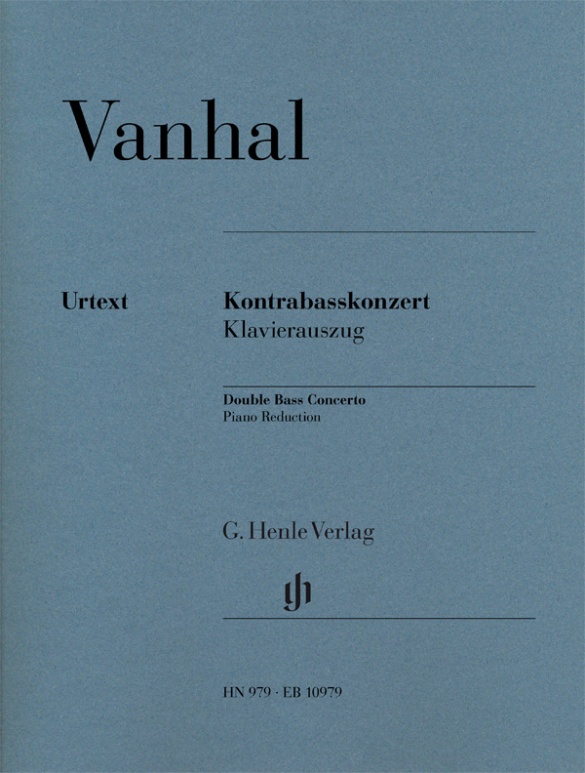

Johann Baptist Vanhal
Double Bass Concerto
Following Dittersdorf (HN 759) and Hoffmeister (HN 721), Johann Baptist Vanhal and his sole double-bass concerto add a further highlight to the classical bass literature in our catalogue. The virtuoso work was transmitted only in a copy of a part owned by the famous double-bass player Johannes Sperger (1750–1812) and found in his estate, which raises a few questions on account of the many later additions in the solo part (especially concerning the octave transpositions). In our Urtext edition, Tobias Glöckler proposes a solution to this dilemma with a musical text that is outstandingly well-prepared for the performing artist. The piano reduction is printed in two keys (C and D major), which allows for performances in the solo and orchestral tuning or, at will. Moreover an additional part, written in fingering notation, has been specially designed for use with the "Viennese tuning" customary in Vanhal's days. It allows players to use this resonant historical tuning immediately without tedious retraining.
Content/Details
About the Composer
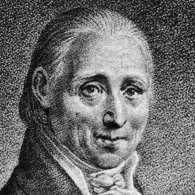
Johann Baptist Vanhal
A Bohemian composer and violinist. While his early compositions still employ Baroque elements, a transition to Classicism is clearly evident over the course of his output. His fame during his lifetime can be measured particularly by the many publications that contributed to dissemination of his works to places such as France and England. In his later keyboard compositions, which enjoyed great popularity, he was responding to the increasing demand from amateurs for keyboard repertoire. In addition he wrote 76 symphonies, sacred works, and chamber music, among other things.
| 1739 | Born in Nové Nechanice on May 12. |
| 1752 | Takes organ lessons with Anton Erban. |
| around 1752 | He works as an organist in Opočno, becomes regens chori (choral director) in Hněvčeves, and receives violin instruction from Mathias Nowák. |
| around 1760 | He moves to Vienna at the behest of Countess Schaffgotsch. Here he takes lessons with Matthäus Schlöger and, probably, with Karl Ditters von Dittersdorf. He establishes himself in Viennese musical life as a violinist, teacher, and composer, numbering Ignaz Pleyel among his pupils. |
| 1769–71 | He travels through Italy and meets Christoph Willibald Gluck as well as Florian Leopold Gassmann, assisting with the latter’s opera productions. |
| around 1780 | He reduces his concert-giving. He primarily composes sacred music, organ works, and keyboard pieces. |
| 1784 | He plays in a quartet with Joseph Haydn, Wolfgang Amadeus Mozart, and Karl Ditters von Dittersdorf. |
| 1813 | Dies in Vienna on August 20. |
About the Authors
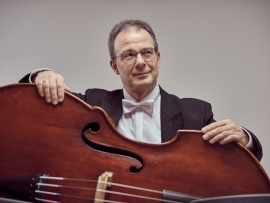
Tobias Glöckler (Editor, Fingering and bowing for Double Bass, Cadenzas)
Tobias Glöckler is associate principal double bass player at the Dresdner Philharmonie and a prizewinner of the International ISB Double Bass Competition (USA). He studied with Konrad Siebach at the Music Conservatory in Leipzig, perfecting his skills with Jeff Bradetich (Chicago) and Ulrich Lau (Stuttgart). While studying, he was principal double bass player with the International Gustav Mahler Youth Orchestra under Claudio Abbado. He has performed as a soloist with different orchestras, including the Dresdner Philharmonie with Ton Koopman. In addition he has made recordings for radio and has made guest appearances at diverse music festivals. He is a founding member of and solo bass player with the “ensemble frauenkirche” and has explored a great many chamber music works with the Dresdner String Quintet.
Glöckler teaches at the music conservatory in Dresden. His efforts concerning the revival of the “Viennese Tuning” have been rewarded with a Distinguished Achievement Award for historical performance practice.
Photo © markenfotografie
Product Safety Informations (GPSR)

G. Henle Verlag
Here you can find the information about the manufacturer of the product.G. Henle Verlag e.K.
Forstenrieder Allee 122
81476 München
Germany
info@henle.de
www.henle.com
Der Hrsg. Tobias Glöckler, Solobassist in der Dresdner Philharmonie, hat sich sehr intensiv mit diesem Manuskript beschäftigt und daraus eine äußerst genaue Neuausgabe erstellt, die zu dem Werk keine Fragen offen lässt. (...) Der sich ebenfalls sehr nah an den überlieferten Orchesterstimmen orientierende Klavierauszug erscheint in D-Dur sowie in C-Dur, was dem Kontrabassisten eine erfreuliche Flexibilität bei Aufführungen (Kombination mit einem Solo- oder Kammermusikprogramm) gewährleistet. Alle Stimmen sind sehr gut lesbar und bereiten keinerlei Probleme beim Blättern. (...) Insgesamt ist diese Ausgabe aufgrund ihrer Genauigkeit, guten Lesbarkeit sowie der Ausführbarkeit in verschiedenen Stimmungen eine sehr erfeuliche Neuerscheinung.
ESTA-Nachrichten, 2016La parte del contrabbasso non si discosta quindi molto dalle edizioni pubblicate in anni precedenti, se non per il ricco apparato di note e l'interessante prefazione. (...) Apprezzabile l'intento di far conoscere la prassi di esecuzione dell'epoca, su contrabbassi accordati secondo la cosidetta "intonazione viennese", per terze e quarte.
Archi Magazine, 2016Your new Vanhal edition is great! I’m so grateful everything worked out for us to use it with the Chicago Symphony.
Alex Hanna, Chicago Symphony Orchestra, in a letter to the editor, 2016This opening material expands on the background of Wanhal’s concerto as mentioned above, and explains the various elements of the edition, including the basic approach used in adapting the manuscript parts, as well as various performance options aimed at making this concerto accessible to present-day double-bass soloists of all kinds. ... Again, it appears that Glöckler’s intent is to make this work as accessible to as many performers – modern players as well as period-instrument practitioners – as possible. ... Glöckler presents a wide range of performance options for the soloist that should render Wanhal’s concerto, long a staple of the modern solo double-bass repertory, eminently accessible to all twenty-first-century performers who wish to engage with it.
Eighteenth-Century Music, 2017Tobias Glöcklers Editionsarbeit vermittelt einerseits einen klaren Einblick in die Quellenlage, legt aber auch Zeugnis ab vom Willen, einen gut austarierten Kompromiss zu finden zwischen historischer Genauigkeit und Nähe zur heutigen Spielpraxis.
das Orchester, 2019recommendations
autogenerated_cross_selling
Further editions of this title
Further editions of this title


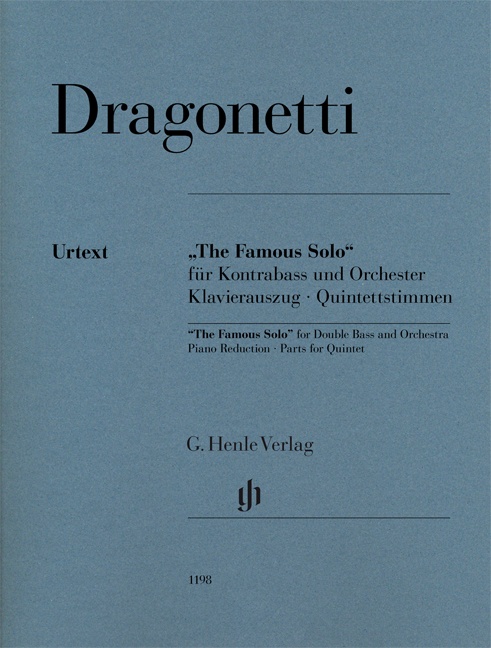
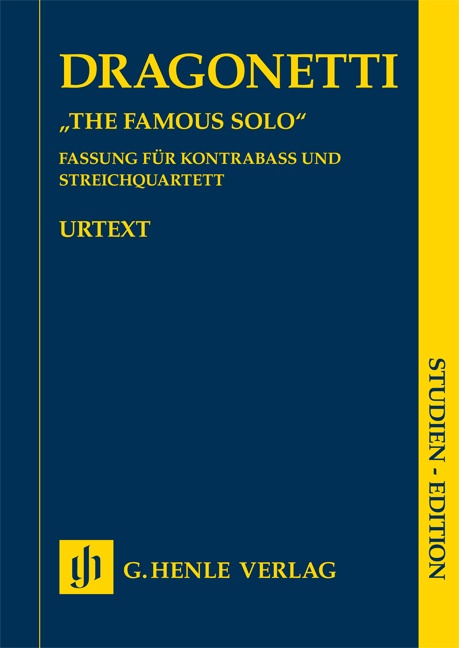

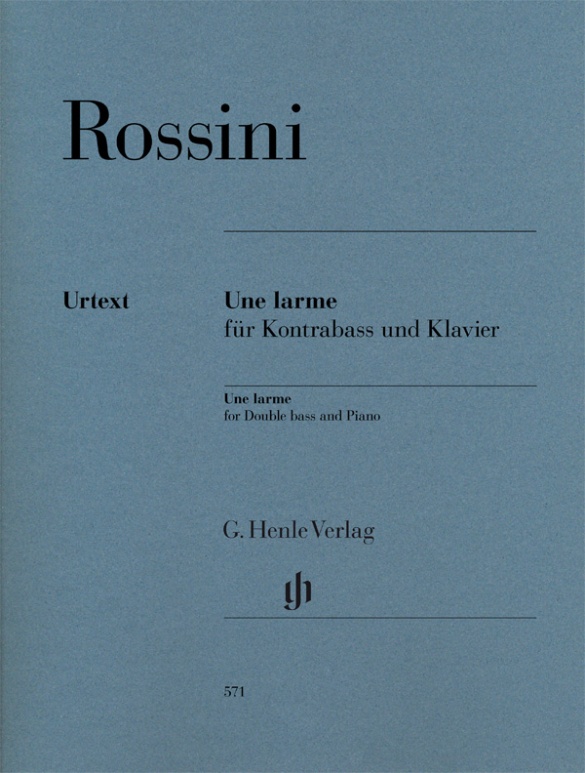
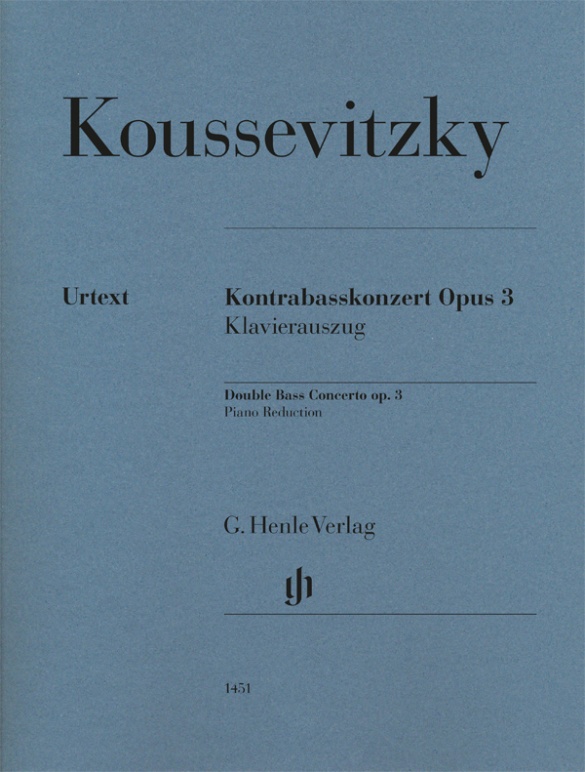
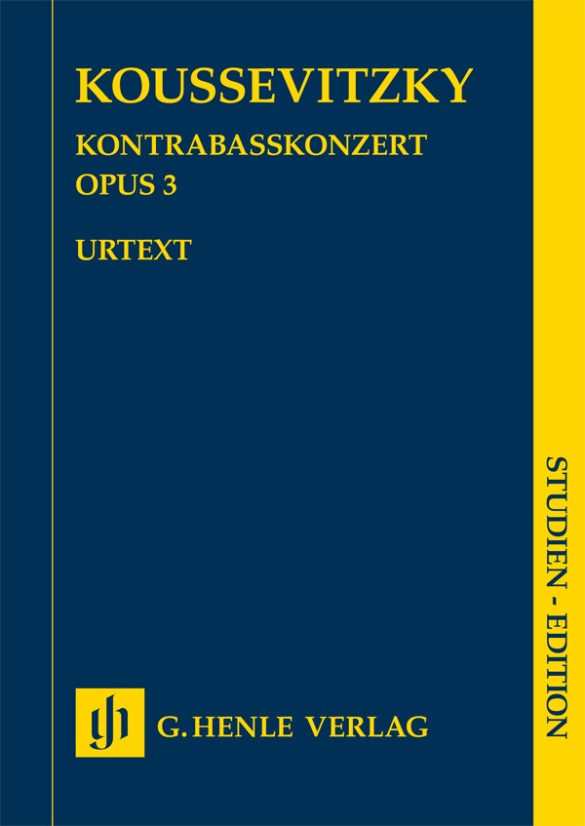
Part in "Viennese tuning" (A-d-f#-a): free download
Orchestral material from Breitkopf & Härtel